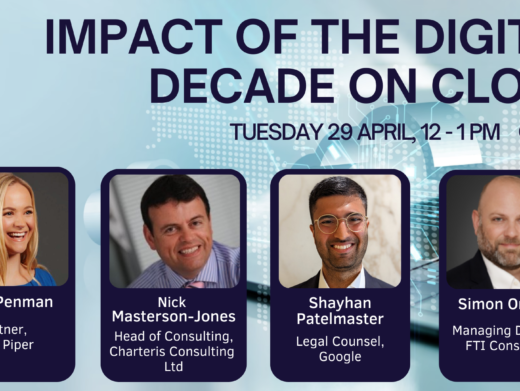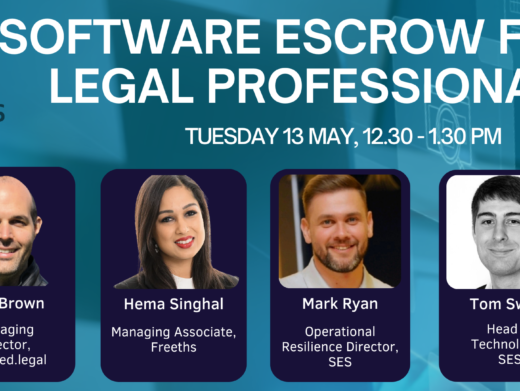If there were a few tears over the translation of the Conferencefrom the majestic surroundings of Gleneagles to the riverside in Glasgow,without a tree, a hill or golf course to distract the weary lawyer, then theywere being shed in private. The innovative and expanded working conferenceproviding parallel sessions, with a substantially increased exhibition, seems tohave been enthusiastically supported by the profession without a glance over itscollective shoulder.
The Internet & E-Mail
The Conference offered two IT sessions. The first on the Internet and E-Mailwas introduced by Kevin Grainger, Technical Director of Company Net in Edinburgh- whose clients include Standard Life, Burmah Castrol, the Scottish Office andHistoric Scotland. Kevin began by asking for a show of hands by those usinge-mail. About 25% or so went up, an increase of 20% on last year’s showing atGleneagles. Emphasising the low cost and immediate benefits of e-mail, Kevindrew a parallel with the introduction of the fax machine, without which it wouldnow be unthinkable to operate. On this comparison, it will doubtless be moreinteresting to have, at next year’s conference, a show of hands by those whoare not using e-mail.
Turning to websites, he explained the distinction between flat or firstgeneration sites supported by word processing and the database driven secondgeneration sites. In considering the use of websites for business, the key issuewas to identify what they would add in the way of value to an existing business.Database second generation sites offered real potential for developing businesssystems rather than the electronic marketing brochure options of flat or staticsites. Second generation websites anticipate interaction with Digital TV. Kevindemonstrated a number of these some (not, I hasten to add, that recentlylaunched by Law Society of Scotland!) accompanied by a beat that had feettapping in the aisles – although inclusion of the theme music from the film Titanicmight have sent a frisson down the spine of one or two.
Business on the Net
Neil Francis, also from Company Net, spoke next on doing business on the net.Understandably many were nervous of new ways of marketing, but not responding tochange could be disasterous. He offered the example of the EncyclopaediaBritannica, comprising 32 substantial volumes selling for around a £1,000,which suddenly found itself overtaken by Microsoft’s electronic multimediaEncarta. By moving swiftly to an online version, Britannica successfullyremarketed itself to the extent that current figures indicate use by 40% of USstudents.
He cited other examples of successful e-commerce, but warned that thedevelopment of such sites was costly and investors might have to wait some timebefore achieving a return.
DRAMS
The final speaker in this session was Jim Devin, from the Scotch WhiskyAssociation, whose website had been developed by Company Net. He outlined theinitial stages undertaken in the Association’s planning of DRAMS (DataRetrieval Access Management Systems). Phase one had been the introduction ofe-mail: phase 2 a public access site for information; and phase 3 an extranet tosupply information for those trading in the product, eg the import regulationsof different countries. To be able to supply the latter information withimproved speed could be critical where such regulations could change during thetime between a consignment leaving this country and arriving at its destination.
The site enabled credit card ordering of the product though there was arequirement on the part of the purchaser to state that he or she was over 18.(‘Now where, I wonder’, you could see a number of the audience thinking,‘have I encountered that before?’) Addressing the question of security, thespeaker noted that a recent DTI meeting had been unable to trace a singlereported case of credit card fraud on the net in any jurisdiction. The websiteeven contained a golfing guide to distilleries which produced a certain flurryof responsive note-taking in the audience.
Computing – What’s New?
If the thrust of the previous session had been that there were lessons to belearned by the profession from business in general, Neil Cameron, joint Chairmanof SCL, the speaker in the second session, covered recent developments andchanges in a number of IT applications more specifically concerned with runningthe business of a legal practice.
Practice Management
Practice management systems could enable more accurate capturing of cost andimproved billing and credit control, reducing the likelihood of the clienteffectively using the firm as a bank. The application of matter budgeting andcost control could increase recorded chargeable time and lead to a reduction in‘lock-up’, ie the value tied up in work in progress which for law firms wasestimated to average three to six months.
Such systems enabled a more accurate analysis of the business flow, such asidentifying the relative profitability of different work areas. It was importantthat the chosen system integrated fully with other existing office systems.While most people began by swearing at such systems, they soon came to swear bythem.
Case Management
Case management systems could both increase productivity and increase thequality of work. Such systems were beginning to move from use in high valuecases to more routine situations, such as personal injury cases where theprompting facilities were being found valuable – particularly where work hadbeen devolved to juniors. While technically more difficult to implement,experience was beginning to support the worthwhileness of such systems.
Infrastructure
Neil next turned to review current changes in the office infrastructure.While increasing standardisation involving Microsoft products might mean moremoney in Mr Gates’ pocket, it also brought considerable advantages. Where inthe past decisions could involve a considerable amount of time and research inassessing what to choose, such decisions are now easier to make. The IT skillsfor key products are readily available. There is a corresponding wide knowledgeof the product mix. Stabilisation (ie getting the system installed) is easier.Document exchange with clients increasingly using the same systems isfacilitated. But in an environment of increasing systems convergence, how is afirm to mark itself out from the crowd? The answer, Neil suggested, lies inareas such as value added services, client communication, and case management.
VA Taxonomy
Introducing the concept of Value Added Taxonomy, Neil believed that improvedinformation management offered considerable development potential. At presentdifferent categories of information within a firm are likely to be referenced inentirely different ways and to different degrees of detail. By introducing auniform system of classification for all types of information, ranging fromclient matters to hard copy library information, a firm would be able to accessand transfer related information from one category to another in a way whichcould currently not be undertaken, thus unlocking valuable knowledge, savingtime and achieving a greater sharing of know-how.
Net Facilities
Neil concluded by touching on some of the potential applications of inter,intra- and extra-net facilities, particularly for tying-in clients and offeringinnovative services. Extranet access to practice management systems couldprovide clients with up-to-date information (suitably sanitised) about work inprogress and charges.
Linklaters had been the first firm in the UK to offer an information serviceto clients. The Linklaters Blueflag service provides advice on investment,currently across 23 countries, at an initial cost of between £3,000 and £5,000per annum plus £1,200 to £2,000 per country. The cost of setting up theservice, estimated at £500,000 is believed to have been recouped in the firstsix months.
However, such services should not be understood to be an option onlyavailable to the larger city firms. Kaye Tesler & Co, for example, werecurrently offering about 15 useful legal products ranging from a simple will at£40 to a change of name by deed poll.
Innovate
In this changing scene, Neil advised nothing should be taken for granted.Innovate! The prizes were likely to be competitive advantage, doing thingsbetter, increased profit margins, client tie-in, and above all, Survival.




